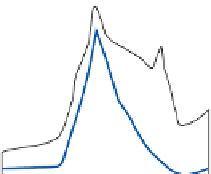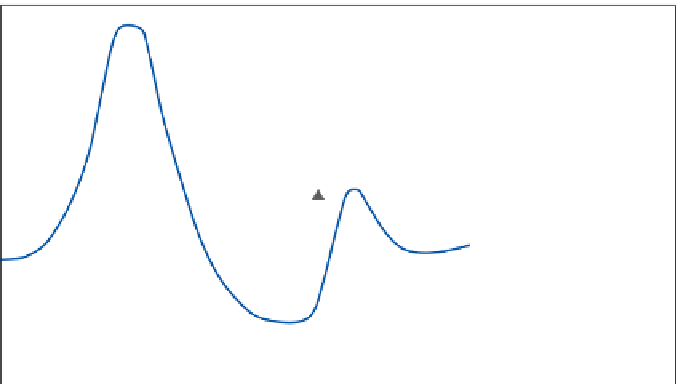Geoscience Reference
In-Depth Information
altitude of the mean condensation level and zone
of maximum precipitation are similarly observed.
In the Pamir and Tien Shan of Central Asia, for
instance, the maximum is reported to occur at
about 1500m in winter and at 3000m or more in
summer. A further difference between orographic
effects on precipitation in the tropics and the mid-
latitudes relates to the great instability of many
tropical air masses. Where mountains obstruct
the flow of moist tropical air masses, the upwind
turbulence may be sufficient to trigger convection,
producing a rainfall maximum at low elevations.
This is illustrated in
Figure 4.19A
for Papua New
Guinea, where there is a seasonally alternating
wind regime - northwesterly (southeasterly) in
the austral summer (winter). By contrast, in more
stable mid-latitude airflow, the rainfall maximum
is closely related to the topography (see
Figure
4.19B
for the Swiss Alps).
5
Drought
The term 'drought' implies an absence of
significant precipitation for a period long enough
to cause moisture deficits in the soil through
evapotranspiration and decreases in stream flow,
so disrupting normal biological and human
activities. Crop damage and water shortages are
typical results of drought conditions. Thus,
drought may occur after only three or four weeks
without rain in parts of Britain, whereas areas of
the tropics regularly experience many successive
dry months. There is no universally applicable
definition of drought. Specialists in meteorology,
agriculture, hydrology and socio-economic
studies, who have differing perspectives, have
suggested at least 150 different definitions! All
regions suffer the temporary but irregularly
recurring condition of drought, but particularly
(A)
(B)
800
SSW
NNE
NW
SE
700
0
50
0
10
km
km
600
MAY-NOV
DEC-MAY
500
MT WILHELM
ALPS
4000
CENTRAL
HIGHLANDS
400
3000
300
2000
200
1000
0
AKOMA
100
MADANG
INTERLAKEN
JUNGFRAU
RHÔNE
Figure 4.19
The relationship between precipitation (broken line) and relief in the tropics and mid-
latitudes. A: The highly saturated air masses over the Central Highlands of Papua New Guinea give seasonal
maximum precipitations on the windward slopes of the mountains with changes in the monsoonal
circulation; B: Across the Jungfrau massif in the Swiss Alps the precipitation is much less than in A and is
closely correlated with the topography on the windward side of the mountains. The arrows show the
prevailing airflow directions.
Sources: A After Barry (2008). B After Maurer and Lütschg from Barry (2008).



























